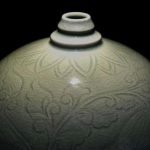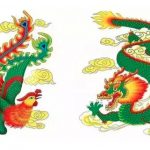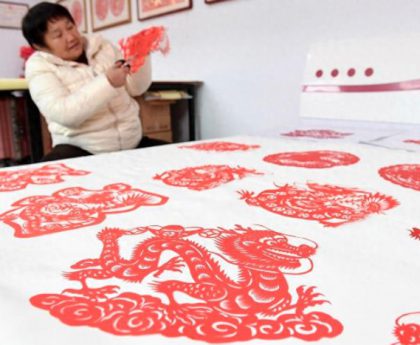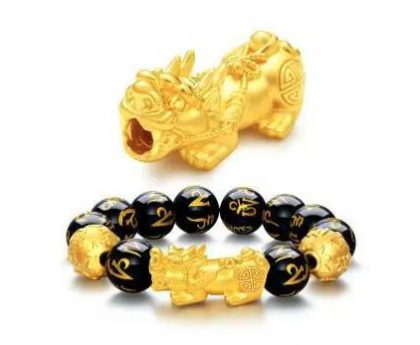Ru Kiln
Ru porcelain was named after its origin in ancient Ruzhou (now Baofeng County, Henan Province), sitting atop among the five famous porcelains in the Song Dynasty. Ru kiln is famous for firing celadon with glaze colors including celeste, sky blue, bean green and moon white. Among them, the sky blue glaze contains gorgeous emerald-green agate and fat, moist juice. The clasp sound of Ru porcelain is musical and beautiful and its color is elegant and natural just like a jade. Ru porcelain was determined as a geographical indication (GI) protection product in 2005 and its firing technique was inscribed on the list of national intangible cultural heritage representative projects in China in 2011.
Guan Kiln
The Guan kiln was specially built to fire porcelain for the imperial court in Bianliang, the capital during the reign of Emperor Huizong in Song Dynasty. Porcelains produced by the Guan kiln in Southern Song Dynasty followed the Song’s symmetrical, courtly-imposing and elegant style. The Guan porcelain is called “purple mouth and iron foot” because its fetal soil looks dark brown for very high iron content and heavy texture. Its glaze is heavy and bright in surface, fat and rich in texture and gentle and exquisite in appearance. After being scraped repeatedly, its glaze fades to produce regular texture layout and solemn shape. In 2007, the firing techniques of Guan kiln of Southern Song Dynasty was added to the list of Zhejiang Provincial Intangible Cultural Heritage.
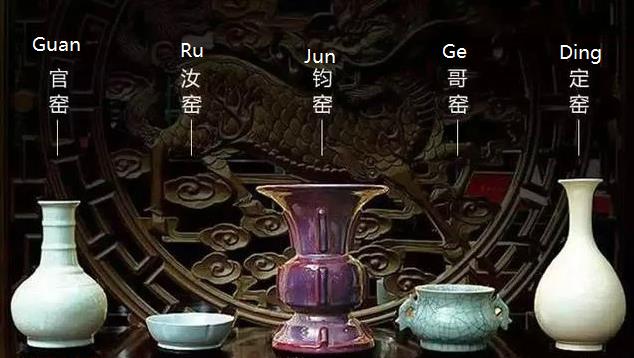
Ge Kiln
The Ge kiln produces purple-mouth and iron-foot porcelains with its gray and black body as thin as paper, patterned glaze as thick as jade. It is represented by Longquan celadon produced in Longquan City, Zhejiang Province. The Ge kiln uses magnificent and simple patterns including ice crack, crab claw and cow hair patterns as decorations, and its full and clean glaze layers match the patterns well, making it even more elegant. The Longquan celadon was determined as a GI protection product in 2003 and its firing technique was inscribed to the list of China’s national intangible cultural heritage in 2006 and the Representative List of the Intangible Cultural Heritage of Humanity of the United Nations Educational, Scientific and Cultural Organization (UNESCO) in 2009.
Jun Kiln
An official kiln named Jun kiln was set up during the reign of Emperor Huizong in Song Dynasty near the ancient Juntai (now Yuzhou city, Henan province) where Emperor Qi built the capital in Xia Dynasty. It’s well-known for unique artistic effects in kiln. The Jun porcelain is rich in gorgeous colors including forest, field, celeste and emerald colors. There is a saying that “purple is the most expensive, red is the most precious and celeste and moon white is better than emerald.” The Jun porcelain is regarded as the gift artifact for its elegant shape, solid fetal bone, neat carving, crisp lines and uncontrollable kiln-changing colors. The Jun porcelain was determined as a GI protection product in 2003 and its firing technique was added to the list of China’s national intangible cultural heritage in 2008. In 2009, the Jun porcelain of Yuzhou was registered as a GI certification trademark.
Ding Kiln
The Ding kiln was named after its origin of Dingzhou in Tang and Song Dynasties (now Quyang County, Baoding City, Hebei Province). Its body is thin, light and relatively solid with not too transparent white and yellowish colors. Its beige glaze is so thin that the body can be seen. The crystal white glazes of many Ding porcelains are shaped like tear stains called “wax tear stains”, showing yellow-green colors. The swirling traces on the body can be seen on the thin glaze of the utensil’s outer wall, commonly known as “bamboo filament brush pattern”. In 2008, the firing technique of Ding porcelain was listed as the China’s national intangible cultural heritage.

